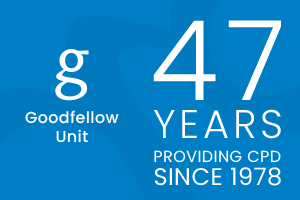
Restless legs syndrome (RLS) is a common and frequently under-recognised condition with significant potential impact on quality of life.
This MedCase discusses strategies for diagnosis and treatment including the use of medications.
Mrs M is a 78-year-old woman with chronic obstructive pulmonary disease (COPD) and hypertension. She is overweight at 88kg (height 1.68cm; BMI 31.2).
Her regular medications are the Incruse Ellipta inhaler once daily, atorvastatin 40mg once daily, and losartan 100mg once daily.
Her main concern at today’s appointment is lower leg and foot pain at night. She tells you the pains come at bedtime in both legs and they are relieved by moving. She has tried multiple creams, ice packs, and paracetamol for relief but nothing has worked.
What is your approach?
What is RLS
RLS is a circadian disorder of sensorimotor integration.1 It is characterised by an uncomfortable and irresistible urge to move the legs or other parts of the body, which is worse at night and relieved by movement. RLS symptoms typically impair sleep and mood with consequent impacts on daily activities and quality of life.
Historical note: Sir Thomas Willis first described RLS in 1672, observing “so great a Restlessness and Tossing… that the diseased are no more able to sleep, than if they were in a Place of the greatest torture”. In 1960, Dr Karl Eckbom added that it is “so common and causes such suffering that it should be known to every physician”.
RLS was formerly known as Willis-Eckbom disease.2
The pathophysiology of RLS is not well understood. Iron status is relevant since conditions of peripheral iron deficiency such as iron deficiency anaemia, pregnancy, or kidney disease are well-known secondary causes of RLS.1 However, as most patients with idiopathic RLS will not have detectable peripheral iron deficiency, a theory of regional iron deficiency within the brain is proposed, whereby symptoms result from poor iron transport into critical neurons causing local hypoxia and myelin loss.1
A second theory relates to dopaminergic dysfunction, based on the effectiveness of dopamine agonists in relieving RLS symptoms and the high prevalence of RLS in patients treated with antipsychotics that block dopamine.1
Women are disproportionately affected
RLS is two to three times more prevalent among women than men.3,4 It affects up to 14.3% of the adult population overall1 and up to 23% of elderly people.5 It is rare in children, but after age 30 significantly more women than men are affected.3
There is no clear understanding of why RLS affects women more than men.
It often coexists with conditions that are common among women, including migraine, other sleep disorders, depression and anxiety.1 A hormonal cause has been theorised, based on observations that 20% of pregnant women experience RLS symptoms.1 Pregnancy itself may be a risk factor; higher parity predicts a greater risk of idiopathic RLS later in life.2
Many women report worsening RLS symptoms after menopause yet oestrogen replacement therapy does not seem to improve symptoms.2
Under-reported, under-diagnosed, under-treated
RLS is commonly overlooked in clinical practice. Studies demonstrate it is widely under-diagnosed, leading to relatively few patients receiving adequate treatment.2
The symptoms of RLS are rarely raised as a presenting complaint, even in dedicated sleep consults, according to Dr Tony Fernando, psychiatrist and sleep specialist. Patients may consider the symptoms unimportant despite their significant impact on quality of life. Dr Fernando recommends using a validated sleep questionnaire, such as the Auckland Sleep Questionnaire, to screen for symptoms of RLS among other sleep disorders.
Diagnosing RLS
RLS is diagnosed based on the presence of five criteria as defined by the International Restless Legs Syndrome Study Group (IRLSSG)1
- An irresistible urge to move the legs, usually but not always accompanied by uncomfortable and unpleasant sensations in the legs.
- Symptoms that begin or worsen during periods of rest or inactivity, such as lying down or sitting.
- Symptoms are partially or totally relieved by movement, such as walking or stretching, at least as long as the activity continues.
- Symptoms only occur or are worse in the evening or night than during the day.
- The occurrence of the above features is not solely accounted for as symptoms primary to another medical or a behavioural condition (e.g. myalgia, venous stasis, leg edema, arthritis, leg cramps, positional discomfort, habitual foot tapping).
RLS can be primary (idiopathic) or secondary to various comorbidities or medications.
Primary RLS is thought to be autosomal dominant with up to 60% of patients reporting a first-degree relative with the condition.1
Common causes of secondary RLS3,4
- Iron deficiency
- Pregnancy
- Muscle cramps
- Venous insufficiency
- Small fibre neuropathy (especially in those with diabetes)
- Hyperkinetic movement disorders such as akathisia.
Beware the mimics
In the absence of any diagnostic biomarkers, accurate diagnosis of RLS requires awareness of common mimics. Periodic limb movements of sleep (PLMS), which involves repetitive arm or leg movements during sleep, occurs in up to 80% of people with RLS but is a distinct disorder that requires polysomnography to diagnose.
Look for iatrogenic RLS too; selective serotonin reuptake inhibitors (SSRIs), anticholinergics, quetiapine and phenergan can trigger or exacerbate RLS. Consider ceasing or changing these therapies if there is a correlation between their start date and the onset or worsening of RLS symptoms.
How To Distinguish RLS from Some Common Mimics1,2
| Condition Mimicking RLS | How it Differs from RLS |
| Nocturnal movements during transition from wake to sleep state (hypnic jerks, propriospinal myoclonus, hypnagogic foot tremor) | No pain or discomfort |
| Peripheral neuropathy or radiculopathy | Movement does not relieve the pain/discomfort |
| Cramps or fasciculations | RLS does not feature muscle cramps or fasciculation; take a careful history |
| Intermittent claudication | Worse with movement than with rest |
Mrs M completes the sleep questionnaire and you note positive responses to the questions about RLS. On further questioning, she has suffered these symptoms for many years. There are no features of other similar conditions.
On examination, there are no signs of pedal oedema or venous insufficiency. Her lower limb neurological exam is normal.
You note her recent blood tests show she does not have diabetes or iron deficiency anaemia.
You tell Mrs M that you suspect she has RLS.
Mrs M is relieved to have an explanation and asks you for treatment. What do you recommend?
Treatment
RLS is a treatable condition and there is an opportunity to significantly improve quality of life with effective therapy.
Before offering treatment, consider whether RLS is idiopathic or secondary to another cause; if secondary then treat the underlying cause. Also, ask patients what they prefer; mild, intermittent symptoms may not be intrusive enough to justify a regular treatment.
Non-drug therapies are a good place to start and may be sufficient in milder cases. Careful attention to sleep hygiene, reducing caffeine intake and increasing exercise all help; 30 minutes of aerobic and lower body exercise on three days per week improved RLS symptoms in one study.1
Many patients also report symptomatic improvement with supplements such as magnesium or physical therapies such as leg massagers, acupuncture or hot baths. However, evidence is lacking to support any endorsement of these therapies beyond a trial-and-see approach, with appropriate caution around financial costs.1
Drug therapies
Dopaminergic agonists such as ropinirole and pramipexole are recommended as first-line treatments, with alpha-2-delta calcium channel ligands such as gabapentin and pregabalin second-line options.1,2
In New Zealand, ropinirole and pramipexole are available for treatment of RLS; note that ropinirole is used off-label though there is a large body of data supporting its efficacy.5 The approach for both medications is to start with a low dose and titrate up to the lowest effective dose. Adverse effects are usually mild to moderate and relate to dopaminergic action; nausea, dizziness, headache and somnolence are most commonly reported.5
For ropinirole, begin with 250 micrograms at night for 2 days then increase the dose by 500 micrograms daily as tolerated, to a maximum of 4 mg daily. Warn patients that it acts rapidly to cause sedation and is best taken close to bedtime. RLS symptoms may improve as early as two days after starting.
For pramipexole, start at 125 micrograms and consider doubling the dose every 4–7 days up to a maximum of 750 micrograms per day. It has a slower onset than ropinirole and is best taken 2–3 hours before bedtime.
Gabapentin or pregabalin can be used for patients who don’t respond to a dopamine agonist. These medications may be especially useful if there is a concurrent anxiety or sleep disorder. Again, the therapeutic target is the lowest effective dose.
You discuss therapeutic options with Mrs M and she agrees to trial ropinirole.
You start at a low dose of 250 micrograms per night and ask her to increase to 500 micrograms if she experiences no side effects after 48 hours.
You review her in one week, and she reports a partial alleviation of RLS symptoms.
Over the next few weeks, you increase the dose settling at 2.5mg per night which keeps her symptoms at bay.
She comes back in 6 weeks reporting that she sleeping well for the first time in many years and feels much better.
This MedCase was written by Dr Vicki Mount ( MBChB FRNZGP), with expert review by Dr Tony Fernando, Psychiatrist/Sleep and Insomnia Specialist.
References
Recognition of Learning Activities
Don't forget to log your time with The Royal New Zealand College of General Practitioners portal for recognition of learning activities.


